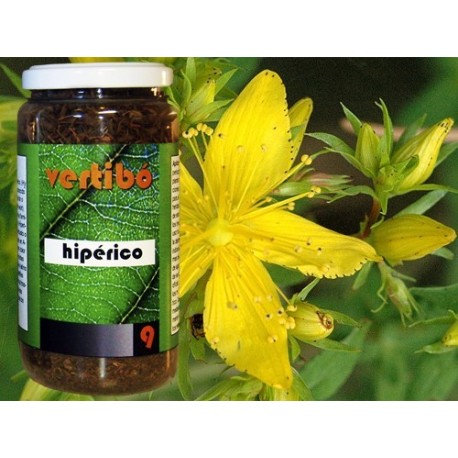No products
Prices are tax included
Online only
HERBS VERTIBÓ 09 - St. JOHN'S WORT
VERTIBO9
New product
HERBS VERTIBÓ 9 - St. JOHN'S WORT
Container with about 100g.
Applications and effect:
Is the treatment of mild to moderate depression.
In topical aid to wound healing.
St John's wort is widely known as an herbal treatment for depression. In some countries, such as Germany, it is commonly prescribed for mild depression, especially in children and adolescents.
SEE VIDEO HOW TO SET UP AN INFUSION:
This product is no longer in stock
More info
HERBS VERTIBÓ 9 - St. JOHN'S WORT
Container with about 100g.
Botanical description:
Saint John's wort is the plant species Hypericum perforatum, and is also known as Tipton's weed, chase-devil, or Klamath weed.
Hypericum perforatum is a yellow-flowering, stoloniferous or sarmentose, perennial herb indigenous to Europe, which has been introduced to many temperate areas of the world and grows wild in many meadows. The common name comes from its traditional flowering and harvesting on Saint John's day, 24 June. The genus name Hypericum is derived from the Greek words hyper (above) and eikon (picture), in reference to the traditional use of the plant to ward off evil, by hanging plants over a religious icon in the house during Saint John's day. The species name perforatum refers to the presence of small oil glands in the leaves that look like windows, which can be seen when they are held against the light.
St John's wort is a perennial plant with extensive, creeping rhizomes. Its stems are erect, branched in the upper section, and can grow to 1 m high. It has opposing, stalkless, narrow, oblong leaves that are 12 mm long or slightly larger. The leaves are yellow-green in color, with transparent dots throughout the tissue and occasionally with a few black dots on the lower surface. Leaves exhibit obvious translucent dots when held up to the light, giving them a 'perforated' appearance, hence the plant's Latin name.
Its flowers measure up to 2.5 cm across, have five petals, and are colored bright yellow with conspicuous black dots. The flowers appear in broad cymes at the ends of the upper branches, between late spring and early to mid summer. The sepals are pointed, with glandular dots in the tissue. There are many stamens, which are united at the base into three bundles.
When flower buds (not the flowers themselves) or seed pods are crushed, a reddish/purple liquid is produced.
Applications and effect:
Its traditional use in tea or capsules, is the treatment of mild to moderate depression.
In topical aid to wound healing.
St John's wort is widely known as an herbal treatment for depression. In some countries, such as Germany, it is commonly prescribed for mild depression, especially in children and adolescents.
SEE VIDEO HOW TO SET UP AN INFUSION:
Reviews
No customer reviews for the moment.





